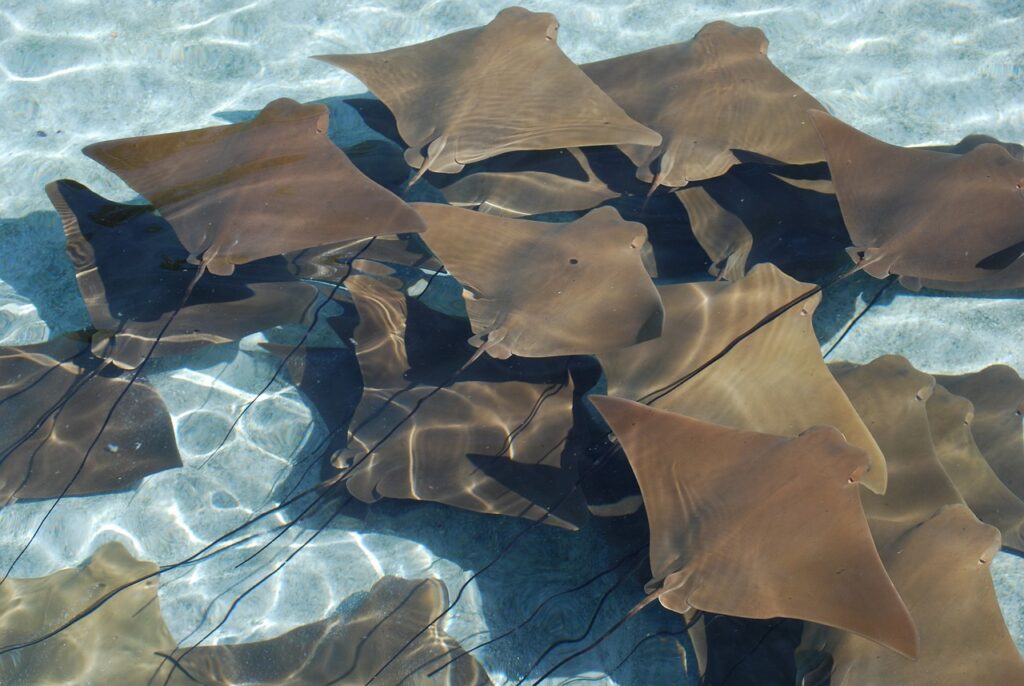
Worldwide there are around 600 different species of rays. The ray species is comprised of many different types of organisms including stingrays, skates, manta rays, and sawfishes. These fish species are often found in more temperate parts of the ocean, brackish water, and even freshwater. Stingrays are known as benthic fish, or fish that tend to stay at or around the bottom of their habitats. They will spend a lot of their time partially buried in the sand for protection. Stingrays are known for their ability to use the serrated edges and sharp points on their spines (barbs) for hunting and protection. The underside of the spines of some stingray species can produce venom which is used to hunt prey and protect themselves. Around 70 different stingray species can also produce an electrical discharge through their barb which also helps with hunting and protection by stunning their prey or predator. These animals can be found feeding on organisms like crustaceans, small fish, snails, clams, shrimp, and other small creatures often on the bottom of bodies of water. Since rays are known for being long and flat, they swim in a more unique way. They will either ungulate their bodies like a wave or flap the sides of their bodies like wings. Different species of stingrays have varying home ranges and distribution patterns. Some species of stingrays can be found in oceans worldwide, whereas some have a much smaller home range. Here in Florida, we have around 15 species of rays that live in different bodies of water located within the state.
Species of stingrays found in Florida:
- Atlantic Stingray, Dasyatis sabina
- Bluntnose Stingray, Dasyatis say
- Roughtail Stingray, Dasyatis centroura
- Southern Stingray, Dasyatis americana
- Yellow Stingray, Urobatis jamaicensis
Humans and Stingray Interactions
Negative interactions between stingrays and humans are very limited, especially out in the wild. As stingrays are usually very peaceful and non-aggressive, they usually only occur when the stingray feels threatened. There are ways to reduce your chance of being harmed by these secretive animals. Stingray stings mainly occur when the animal is stepped on. To reduce your chance of a painful interaction, make sure to shuffle your feet when wading through the water to scare away any buried ray. When participating in recreational activities like snorkeling or diving, make sure to stay aware of your surroundings and do not initiate contact with a wild stingray or any wild animal. In any water activities, it is always important to have another person with you in case an emergency happens.
